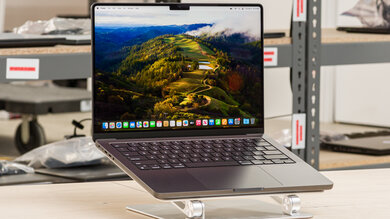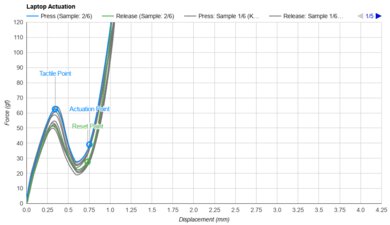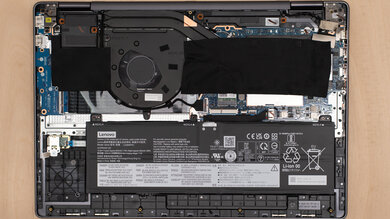
If you're shopping for a photo editing laptop, you'd want to focus on a few things to narrow your options. First and foremost, you need one with a display that can produce all the colors in the color space in which you work, whether it's sRGB or Adobe RGB. If you don't plan on using an external monitor, a laptop with a large, high-resolution screen is preferable, as it'll allow you to see the fine details in your pictures easily. You don't necessarily need a discreet graphics card; some programs can leverage the GPU to provide a smoother experience when manipulating images, but the CPU does the bulk of the processing. There are other things to consider, too, like Thunderbolt support for fast file transfers or an SD card reader, and for working on the go, you'd want to prioritize portability and battery life. We've put together a few picks to get you started; the list is a little short for now, but it'll grow as we review more laptops.
We've bought and tested over 115 laptops. Below, you'll find our recommendations for the best laptops for photo editing you can buy. You can also see our recommendations for the best laptops, the best business laptops, and the best laptops for graphic design.
-
Best Laptop For Photo Editing
School8.8Gaming7.4Multimedia8.5Workstation9.0Business8.5Brightness8.8Reflections8.8Out-Of-The-Box Color Accuracy9.7Color Gamut9.5Cinebench R23 (CPU Rendering)9.9Battery Life (Web Browsing)15.5 hrsThe best laptop for photo editing we've tested is the Apple MacBook Pro 14 (M3, 2023). This premium workstation has more than enough processing power to handle complex photo editing tasks and provides an amazing user experience overall. You can configure it with a base M3, M3 Pro, or M3 Max SoC, so you can choose based on your budget and the amount of processing power you need. Apple's M3 chips are even more power-efficient than their M2 predecessors, resulting in an even longer battery life of 14 to 15 hours of light use. Its sharp Mini LED display gets bright enough to combat glare in well-lit settings, and it's superbly calibrated out of the box, so you can get right to work with no further calibration needed. The only downside is that it doesn't have full coverage of the Adobe RGB color space, as it can't reproduce the highly saturated greens. The Apple MacBook Pro 16 (M3, 2023) is also a good choice if you want more screen space, but it isn't as portable and costs more.
A great Windows alternative is the HP OMEN Transcend 14 (2024). Although it carries the OMEN name, this model has a relatively tame design, so it won't stick out in a professional work environment. It's available with Intel Core Ultra CPUs and NVIDIA 40-series discrete GPUs, giving you plenty of power to tackle intensive tasks. The Core Ultra CPUs also sport an NPU (Neural Processing Unit), which some photo editing apps can leverage to accelerate certain functions, like image generation. The overall user experience is great; it has a gorgeous 120Hz OLED display with near-full Adobe RGB coverage, an excellent touchpad, and a wide port selection, including two USB/Thunderbolt 4s and an HDMI 2.1. There's no SD card reader like the MacBook Pro, though. Another downside is its short battery life of around six to seven hours of light use.
-
Best Upper Mid-Range Laptop For Photo Editing
School8.4Gaming7.1Multimedia8.6Workstation8.1Business8.2Brightness7.8Reflections7.3Out-Of-The-Box Color Accuracy6.9Color Gamut9.7Cinebench R23 (CPU Rendering)9.5Battery Life (Web Browsing)11.0 hrsIf you don't need a powerful workstation with a discrete GPU, get the HP Spectre x360 14 (2024) instead. Like the HP OMEN Transcend 14 (2024) mentioned above, this premium 2-in-1 convertible has a beautiful OLED display with near-full Adobe RGB coverage. The display supports pen input if you prefer working with a stylus; however, you may have to buy the pen separately, as it isn't always included in the box. As for the configuration, you can get it with the same Intel Meteor Lake CPUs (up to a Core Ultra 7) paired with up to 32GB of RAM and 2TB of storage. It has an excellent haptic touchpad, an outstanding 4k webcam, and a decent port selection with two Thunderbolt 4 ports. The battery lasts around 11 hours of light use, which is impressive for a Windows laptop. One thing to know: the OLED display flickers, so it may cause eye strain if you're sensitive to display flicker. The base model starts at $1450 USD (MSRP); you can get it directly from HP if you have trouble finding it elsewhere.
For Mac users, we recommend the Apple MacBook Air 15 (2024). This 15-inch ultraportable has a sturdy build, all-day battery life, and a fast SoC (M3) that can easily handle photo editing tasks. Thanks to its SoC's power efficiency, it has an even longer battery life than the HP, lasting almost 13 hours of light use. Plus, this is a fanless device, so you don't have to worry about loud fan noise distracting you from your work. Its large 15-inch display lets you work more comfortably and looks incredibly sharp; however, its contrast ratio is much lower since it's an IPS panel, and it doesn't have full Adobe RGB coverage, as it's missing the highly saturated greens. Another downside is that it only has two USB-C ports. The M3 model supports two external displays, which is an improvement over its M2 predecessor, but this model can only do so with the laptop closed.
-
Best Mid-Range Laptop For Photo Editing
School8.1Gaming5.9Multimedia8.0Workstation7.8Business8.0Brightness7.8Reflections6.1Out-Of-The-Box Color Accuracy9.4Color Gamut8.6Cinebench R23 (CPU Rendering)9.4Battery Life (Web Browsing)12.4 hrsIf you're on a tighter budget and want something more modest, get the Lenovo Yoga 7i 16 (2023). This 2-in-1 convertible is easy to carry around for a 16-inch device, and its battery lasts over 12 hours of light use, so you don't need to worry about bringing a charger. You can get this laptop with an FHD+ or QHD+ display; we recommend the latter, as its higher resolution lets you see small details more clearly when editing photos. It only has full sRGB coverage, so it isn't suitable for those working in Adobe RGB.
This laptop is available with Intel 13th Gen U- or P-series CPUs. You can get up to 16GB of RAM and 1TB of storage; just remember that the memory isn't user-replaceable, so make sure to get enough for your needs upfront. Ports include two USB-C/Thunderbolt 4s and a MicroSD card reader, allowing you to easily transfer photos from your camera to the laptop or connect external displays. If you like working with a stylus, the display supports pen input, but depending on the model, you may have to buy the pen separately. You can get this laptop directly from Lenovo if you have trouble finding it elsewhere.
-
Best Budget Laptop For Photo Editing
School7.8Gaming6.0Multimedia7.3Workstation7.4Business7.3Brightness6.7Reflections7.3Out-Of-The-Box Color Accuracy6.7Color Gamut8.6Cinebench R23 (CPU Rendering)8.4Battery Life (Web Browsing)13.8 hrsOur budget pick is the Acer Swift 3 14 (2020). Despite its wallet-friendly price, this 14-inch model has a sturdy build, and its battery lasts a full day of light use. You can configure it with an Intel 11th Gen Core i5 or i7 CPU, up to 16GB of memory, and up to 512GB of storage. The display's resolution is only 1080p and only has full sRGB coverage; this is fine if you want to edit some photos to post on social media or other websites, but not for professional print photography. For ports, you get two USB-As, one USB-C/Thunderbolt 4, a full-size HDMI, and a headphone jack. The main drawbacks compared to the Lenovo we recommend above are the CPU's performance as well as the size and sharpness of the display.
Notable Mentions
- ASUS Zenbook 14 OLED (2024): The ASUS Zenbook 14 OLED (2024) is a cheaper, clamshell alternative to the HP Spectre x360 14 (2024). It also has a nice OLED display with near-full Adobe RGB coverage and is available with the same Intel Meteor Lake CPUs. However, it throttles much more under load, and its battery life is shorter at around eight hours of light use. Also, there have been many complaints regarding ASUS warranty repairs, so it may be hard to get the laptop fixed if you encounter issues. See our review
- ASUS Zenbook 14 Flip OLED (2023): The ASUS Zenbook 14 Flip OLED (2023) is cheaper than the HP Spectre x360 14 (2024). It's also a 2-in-1 convertible with pen input support, but it's only available with older Intel 13th-Gen CPUs (with no NPU), and it throttles a lot under load. Additionally, its battery lasts only around eight hours of light use. See our review
Recent Updates
-
May 14, 2024: Replaced the Dell XPS 15 (2023) with the Apple MacBook Pro 14 (M3, 2023) because the Dell is no longer available. Replaced the ASUS Zenbook 14 OLED (2024) with the HP Spectre x360 14 (2024) because the HP has a much longer battery life and provides a better user experience overall. Added the ASUS Zenbook 14 OLED (2024) as a Notable Mention.
-
Apr 08, 2024: Small text edits for clarity. Added the ASUS Zenbook 14 Flip OLED (2023) and the ASUS TUF Gaming A16 Advantage Edition (2023) as Notable Mentions.
-
Mar 07, 2024: Replaced the ASUS Zenbook 14 Flip OLED (2023) with the ASUS Zenbook 14 OLED (2023), as the latter has better performance and is easier to find. Replaced the Apple MacBook Air 13 (M1, 2020) with the Lenovo Yoga 7i 16 (2023) because the M1 MacBook Air was discontinued. Removed the Lenovo Slim Pro 7 14 (2023) as a Notable Mention because it's discontinued and hard to find.
-
Feb 07, 2024: Minor text changes to add the M3 Apple MacBook Pro 14 and 16 as alternatives to the Dell XPS 15 (2023).
-
Jan 11, 2024: Replaced the Lenovo Yoga 7i 16 (2023) with the Apple MacBook Air 13 (M1, 2020) because the Lenovo is the same price as the ASUS Zenbook 14 Flip OLED (2023) but isn't as good overall.
All Reviews
Our recommendations above are what we think are currently the best laptops for photography to buy. We factor in the price (a cheaper laptop wins over a pricier one if the difference isn't worth it), feedback from our visitors, and availability (no laptops that are difficult to find or almost out of stock everywhere).
If you prefer to make your own decision, here's the list of all of our laptop reviews, sorted by price from low to high. Most laptops are available in various configurations, and the table only shows the results of the model we tested, so it's best to see the full review for information about other variants.



















